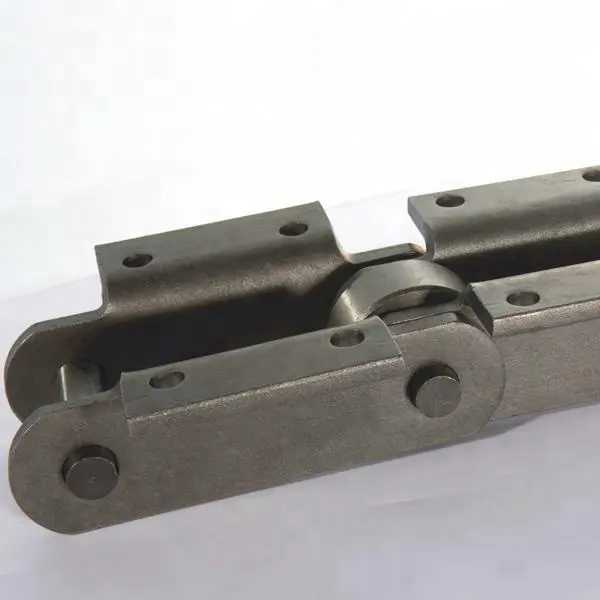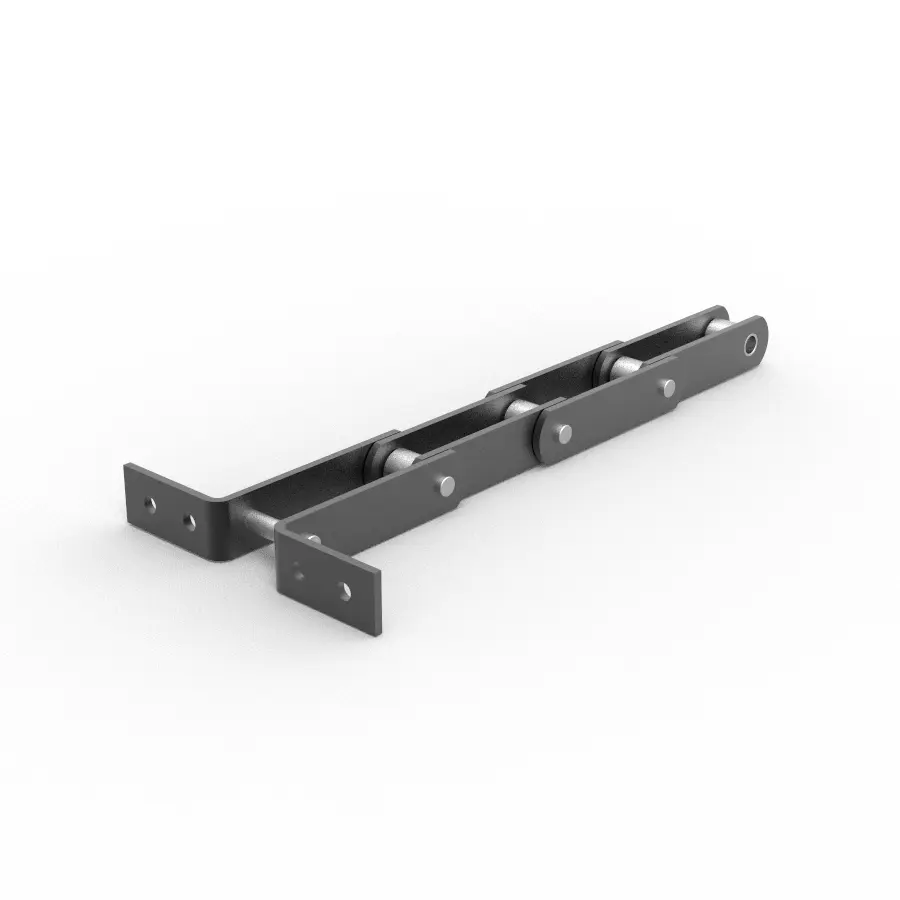Product Description
Product advantages:
| — Ten CoreTechnologies — | |||
| 1 | Chain strengh preload technology | 2 | Pin CRV treatment technology |
| 3 | Plate smoothly punching technology | 4 | Bush oil hole technology |
| 5 | Vacuum Oiled Technology | 6 | Precision Punching Technology |
| 7 | Low frequency fatigue test technology for lange size chain | 8 | Chain length comparison technology |
| 9 | Variation of silence design technology | 10 | Chain dynamic testingtechnology technologies |
Our Advantages:
1. Any inquiry you make will be answered professionally within 6~8 hours.
2. Attaches great importance to product quality and approved by many global quality system certification,such as France, Norway, Germany.
3. Focused on Chain since 1999, have rich experience in Production.
4. High-quality workers,First-class advanced equipment,good quality control,advanced technology.
5. Be Good at Custom-Made Products, provide customized services for customers.
6. Participated in the drafting of 24 national and industrial standards such as chains.As of 2571-Mar, CHOHO has 180 authorized patents.
7. With the responsibility of “Providing high quality chain system with the same service life for the global locomotive industry”, have established a strong R&D team.
By 2571,CHOHO has more than 2,7.
-CHOHO has 4 subsidiaries, including testing technology and international trading companies. has 4 factories in HangZhou, Thailand factory, ZheJiang R&D Center and Tokyo R&D Center. In addition, CHOHO ZHangZhoug Industrial zone is expected to be completed & put into operation next year.
-We specialized in producing all kinds of standard chains and special chains, such as Agricultural Chain, Sprocket, Chain Harrow, Tillage Parts,Rice Harvester Chain, GS38 Chain, Roller Chain, Automobile Chain, Motorcycle Chain Industrial Chain and so on.Our partners among world top enterprises, such as LOVOL,JOHN DEERE,NEWHOLLAND, CLASS,AGCO,DEUTZFAHR,HONDA, KUBOTA etc.
FAQ:
1. Are you manufacturer or trade Company?
We are a factory focused on producing and exporting Chain over 23 years,have a professional international trade team.
2. What terms of payment you usually use?
T/T 30% deposit and 70% against document, L/C at sight
3. What is your lead time for your goods?
Normally 30~45 days.Stock can be shipped immediately.
4. Do you attend any Show?
We attend Hannover show in Germany, EIMA in Italy, CHINAMFG in France, CIAME in China and many other Agricultural machinery shows.
5.Do you offer free samples?
Yes,we can.or you just bear the shipping cost.
6.Is OEM available?
Yes, OEM is available. We have professional designers to help you design.
|
Shipping Cost:
Estimated freight per unit. |
To be negotiated |
|---|
| Standard or Nonstandard: | Standard |
|---|---|
| Application: | Conveyer Equipment, Agricultural Machinery |
| Surface Treatment: | Polishing |
| Samples: |
US$ 1/Meter
1 Meter(Min.Order) | Order Sample |
|---|
| Customization: |
Available
| Customized Request |
|---|
How do mill chains handle misalignment between sprockets in conveyor systems?
Mill chains are designed to handle moderate misalignment between sprockets in conveyor systems. Here’s how they manage misalignment effectively:
Flexible Construction:
Mill chains are built with a flexible construction that allows them to accommodate slight misalignment between sprockets. The chain links and pins have some degree of movement, which helps in absorbing minor misalignment without causing excessive wear or stress on the chain components.
Side Bow Effect:
Mill chains exhibit a phenomenon known as the “side bow” effect, which allows them to adapt to misalignment. The side bow effect refers to the lateral movement of the chain as it wraps around the sprocket. This lateral movement helps the chain adjust to the sprocket’s position, even if it is slightly misaligned.
Sprocket Tooth Design:
The shape of the sprocket teeth can also influence how well the chain handles misalignment. Sprockets with properly designed teeth, such as a standard roller chain sprocket, can aid in reducing the impact of misalignment on the chain’s performance.
Regular Maintenance:
To ensure that mill chains continue to handle misalignment effectively, regular maintenance is essential. Periodic inspections and lubrication can help identify and rectify any misalignment issues, preventing excessive wear and potential chain failure.
Limitations:
While mill chains can tolerate some misalignment, excessive misalignment should be avoided. Prolonged and severe misalignment can lead to accelerated wear and reduce the chain’s overall lifespan. In cases where misalignment is significant, it is crucial to address the root cause of the misalignment and make the necessary adjustments to prevent further chain damage.
Overall, mill chains’ ability to handle misalignment in conveyor systems makes them suitable for applications where minor sprocket misalignment can occur due to system variations or environmental factors.
Can mill chains be used in the cement and construction materials industry?
Yes, mill chains can be used in the cement and construction materials industry. The cement industry involves the production of cement, which is a crucial building material used in various construction projects. Mill chains play a significant role in material handling and conveyor systems within cement plants and other construction material manufacturing facilities.
Mill chains are utilized in cement and construction material handling applications such as:
- Raw Material Handling: Mill chains are used to transport raw materials, such as limestone, shale, clay, and iron ore, from storage areas to the processing units.
- Kiln Feeding: Mill chains are involved in feeding the raw materials into the cement kiln for the clinker production process.
- Clinker Handling: After the clinker is produced in the kiln, mill chains are used to convey and cool the clinker before further processing.
- Cement Grinding: Mill chains help transport the finished cement product to storage or packaging areas.
These applications involve heavy loads, high temperatures, and abrasive materials, making mill chains a suitable choice due to their durability and strength. However, it is crucial to select the right type and size of mill chain to ensure optimal performance and longevity in the cement and construction materials industry.
Overall, mill chains are integral in facilitating the efficient movement of materials throughout the cement manufacturing process, contributing to the productivity and success of the industry.
How do mill chains handle shock loads and dynamic forces in material transfer?
Mill chains are designed to handle shock loads and dynamic forces commonly encountered in material transfer applications. They exhibit specific features and properties that enable them to withstand these challenges effectively:
1. High Strength:
Mill chains are typically made from high-strength materials, such as alloy steels, which provide exceptional tensile strength and toughness. This enables them to resist the impact of shock loads without permanent deformation or failure.
2. Fatigue Resistance:
Manufacturers engineer mill chains with excellent fatigue resistance to endure repetitive dynamic forces. They can withstand cyclic loading and unloading, commonly experienced in material handling systems, without developing cracks or failures over time.
3. Robust Construction:
Mill chains feature a robust and precision-engineered construction. They consist of solid pins, bushings, and rollers that distribute loads evenly along the chain’s length. This design helps in minimizing stress concentrations and preventing premature wear or failure.
4. Proper Lubrication:
Appropriate lubrication is crucial to reduce friction, wear, and noise during chain operation. Proper lubrication helps in dissipating heat generated by shock loads and dynamic forces, preventing excessive wear and elongation of the chain.
5. Regular Maintenance:
Regular inspection and maintenance are essential to ensure the proper functioning of mill chains. Any signs of wear, elongation, or damage should be addressed promptly to avoid sudden failure and downtime.
By carefully considering the application requirements, selecting the right mill chain design, and adhering to maintenance best practices, mill chains can reliably handle shock loads and dynamic forces, providing efficient and continuous material transfer in industrial settings.
editor by CX 2023-09-20




